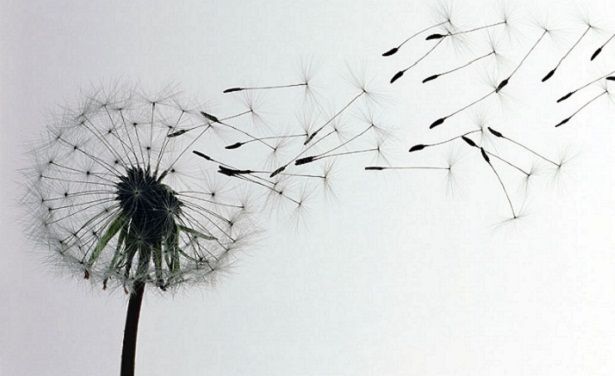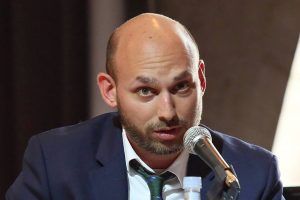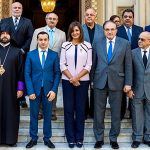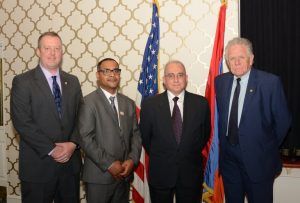Martin Setyan: “Our priority is integration into Armenia”

Martin Setyan is the president of the cultural center of the Armenian community in Uzbekistan. He was born in Vardenis, left for Tashkent in 1982 and has been living there ever since. Setyan is an athlete/trainer and is a graduate of the Armenian State Institute of Physical Culture. Before returning to Tashkent, he was hosted at the Ministry of Diaspora where he gave an interview to “Hayern Aysor”.
“Hayern Aysor”: Mr. Setyan, the Armenian community of Uzbekistan was established a couple of years ago. We know that the Armenians settled particularly in Samarghand a long time ago and that a large number of Armenians settled in Tashkent after the first massacres of Abdul Hammid. What is the community like today? How many Armenians are there in Uzbekistan?
Martin Setyan: Yes, you’re absolutely right. Armenians have been living in Uzbekistan for a long time and have become assimilated. In the early 20th century, many Armenians arrived in Uzbekistan, which was considered one of the Russian provinces and where life was cheaper. A large part of the population represented Western Armenia (Bitlis, Mush, Van…). In the 1920s and 1930s, there were fewer Uzbeks than Russians and Armenians. Today, there are nearly 80,000 Armenians living in Uzbekistan, of which 30,000 are based in Tashkent. Tashkent is one of the most thriving cities in the East, and it’s nice to know that the Armenians have a presence here, have established their associations and work in industry, as well as the spheres of science and the arts.
“Hayern Aysor”: Some Armenians started moving to Uzbekistan after the 1990s. Many Armenians left Armenia and Artsakh due to the Spitak Earthquake and the Karabakh war, and some of them settled in Uzbekistan. How would you describe the relations between the conventional Uzbek-Armenian community and the Armenians who have settled in the country recently?
M. S.: The Armenians of the conventional community had been living with their customs and problems for a long time. Of course, there was assimilation since some Armenians had become detached from the Armenian identity and roots due to mixed marriages. In the Soviet era, there were no conditions for ethnic minorities to preserve their national identities. I’m referring to the years after the war when there was a special kind of raid against ethnic minorities in republics under the flag of internationalism. All Armenians had to study in Russian schools, without having any knowledge of their native language. I’m not even talking about the study of Armenian history. There were no Armenian culture homes. All this left its mark on the lifestyles, psychology, language and thinking of our compatriots. Those who arrived in Uzbekistan after the 1990s brought with them “Armenianness”, which served as an opportunity to resist and strengthen bonds with the locals, because for everyone, national belonging means unity and is irreplaceable.
“Hayern Aysor”: In the 1930s, there were Armenian culture homes in Tashkent and Samarghand. The Armenians had a club in Samarghand, and an Armenian state theater named after Hovhannes Abelyan in Tashkent. The director of the theater was People’s Artist of the ASSR Levon Abrahamyan. Don’t you have plans to restore the previous culture homes and establish some kind of connection between the cultural traditions of the early 20th century and today?
M. S.: We have studied and we know the history of our community. Frankly, I didn’t know there used to be a theater, but we have also established our culture homes and dance groups that take part in pan-Uzbek events and festivals and win awards at different competitions. Our community actively participated in the nationwide events dedicated to the 100th birthday of People’s Artist of the USSR, founder of Uzbek ballet Tamara Khanum Petrosyan and is currently preparing to celebrate the anniversary of founder of Armenian cinema Hamo Beknazaryan since he was also from Tashkent. There are also many notable Armenian figures in Uzbek culture and science, and today, we would like to make the works of those figures popular among Armenian youth. We might be making more efforts to have self-sufficient art groups since they serve as means of helping teach the native language and preserve the Armenian identity. Sometimes even we are unaware of the history of the community. Currently, we face difficulties, but I’m certain that we’ll overcome those difficulties and will be able to make the presence of Armenians in Uzbekistan a topic for in-depth research.
“Hayern Aysor”: It is an established truth that Armenians preserve their identity through schools and churches in any part of the world. I’m aware that the Armenian community of Uzbekistan has a Sunday school and two churches. Are the Sunday school and the church enough to emphasize preservation of the Armenian identity?
M. S.: Our Sunday school has achieved success and has always won in the school competitions. I wouldn’t like to talk only about the good things because we also have problems and concerns. Our religious community is just forming since many Armenians have become detached from the Armenian Church, especially the local Armenians who don’t know anything about the Armenian Church. The Sunday school is also new to them. Not all Armenian students go to school with enthusiasm, because it is easier for them to read, write and speak in Russian, especially since Russian is the language that they communicate in. But we’re not losing hope and are making great efforts. We are making progress and achievements. In addition to the school, we also have the “Urartu” Dance Group and the Art Studio that are also involved in helping the Armenians preserve their identity. We have addressed the Ministry of Education and Science several times with the request for Armenian language and literature textbooks designed for Russian-speaking Armenians. That will make it quite easy for us to teach the Armenian language. We have the “Depi Apaga” (To the Future) magazine, which is issued in Russian and includes articles in Armenian. But that’s not enough. We would like to see the government of the Republic of Armenia pay more attention to Armenian communities both officially and unofficially. We want to feel the warmth of the homeland. Our youth need that more. This young generation faces the danger of assimilation. Sixty percent of Uzbek-Armenian youth don’t speak Armenian. My children, who have a higher education, speak Armenian at home, but they speak Russian at youth clubs. This is a concern. We would also like the support of the Ministry of Diaspora.
“Hayern Aysor”: Do you feel the support of the Ministry of Diaspora now?
M. S.: If I didn’t, I wouldn’t be here today. I have come to ask the Minister of Diaspora to help us solve our problems. Armenia doesn’t have an embassy in Uzbekistan. There is not even a consulate or a direct flight. We would like the Ministry of Diaspora to ask the Armenian government to open an embassy or consulate in Tashkent. Those structures will further strengthen the bond with Armenia and will provide us Uzbek-Armenians with the opportunity to live in Uzbekistan with the awareness that the Armenian government stands by our side and that there are people who focus on our issues of concern. Uzbekistan is, to a certain extent, a Muslim country and has relations with other countries of the Muslim world. Not all of those countries lead a policy that is familiar to us and don’t provide our community with the opportunity to participate in pan-Armenian events. Next year we will be marking the Centennial of the Armenian Genocide. Uzbekistan has its interests in the region. Therefore, it’s not going to be easy for us. But if we have an embassy, we’ll be able to make efforts and contribute to Uzbekistan’s recognition of the Armenian Genocide. After all, the embassy will link us to Armenia and will give many Armenians the chance to think about returning to Armenia.
“Hayern Aysor”: Allow me to thank you for this interview. I hope your wishes come true. I assure you that Armenia and the Ministry of Diaspora always keep our Armenian communities in the center of their attention. It’s just that there is a time for everything.
M. S.: I also thank you for this interview. I think we will collaborate in the future.
Interview by Levon Mutafyan




 Արևելահայերեն
Արևելահայերեն Արևմտահայերեն
Արևմտահայերեն Русский
Русский






